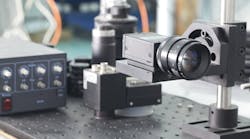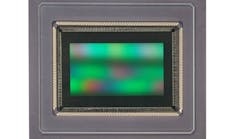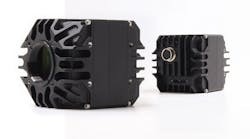Processor delay stalls imaging evolution
Andy Wilson
Editor at Large
Originally designed to move high-bandwidth peripherals closer to the CPU, the PCI bus has become the de facto bus standard for current PCs. But as high-performance image-processing systems are servicing multiple high-speed linescan cameras, Fibre Channel data transmission, fast Ethernet communications, and SCSI-2 interfacing, imaging-data-storage demands are quickly absorbing all of the available bandwidth.
Trying to cope with ever-increasing storage demands, some vendors are still offering 32-bit PCI add-in boards at 33 MHz. However, others are developing 64-bit PCI-bus boards running at 66 MHz to increase system bandwidth. Still others, who prefer not to wait for complete 64-bit PC-based systems to arrive, are harnessing the power of the advanced graphics port (AGP) on the Intel 440LX PCI chipset to offload the PCI bus (see "AGP interface overcomes PCI bandwidth limitations," p. 9).
To implement fully compliant 64-bit systems, however, integrators must have 64-bit processors. And, although it has been eight years since the introduction of what was going to be the most popular 64-bit processor--the DEC Alpha AXP--most of the mass-market processors from Intel and AMD are 32-bit devices. The only processors that operate internally at 64 bits are the DEC Alpha family (now Compaq), Sun UltraSPARC, MIPS Technologies R4000 and R5000, NEC VR Series, and IBM RS64 processors.
To provide systems integrators with a head start in developing such systems, many 64-bit microprocessor vendors are offering VME, CompactPCI, and motherboards for processor support. The DEC AlphaPC 264DP motherboard, for example, features five 64-bit slots and one 64-bit slot shared with an ISA slot. Its integrated PCI peripheral support includes the Adaptec AIC-7895 dual-port, ultrawide SCSI controller.
Unfortunately, for integrators looking to develop systems around a commonly used 64-bit operating system, the AlphaPC 264DP board only supports Microsoft`s Windows NT 4.0, a Windows NT 32-bit operating system. Such support, of course, limits the variety of applications, especially if integrators are hoping to address huge amounts of data to build a medical imaging application, for example. To implement a true 64-bit system, integrators must look further afield to UNIX operating systems such as HPUX, Solaris, and IBM AIX.
Despite the availability of true 64-bit systems, however, the world leader in microprocessor shipments--Intel Corp.--has yet to release its long-awaited IA-64, 64-bit Merced processor. And the delivery date isn`t expected anytime soon. According to industry reports, the Merced processor is slated to begin full-scale production in mid-2000. What`s more, officials at the recent Workstation Leadership Forum in Burlingame, CA, declared that Microsoft will support the processor, when announced, with a version of Windows 2000.
With third-party support companies firmly committed to Intel and Microsoft, it is highly likely that the promise of full 64-bit imaging systems will not fully emerge until such processors, bridge chipsets, peripherals, and operating systems are widely available. Nearly a decade after the announcement of the original 64-bit processor on a chip, it is ironic that the arrival of true 64-bit processors may be remembered as an Intel/Microsoft innovation.
In any event, the delay of the 64-bit Merced processor is not expected to deter its impact on innovative imaging. When released, it should help integrators unleash a new era of outstanding imaging applications.




